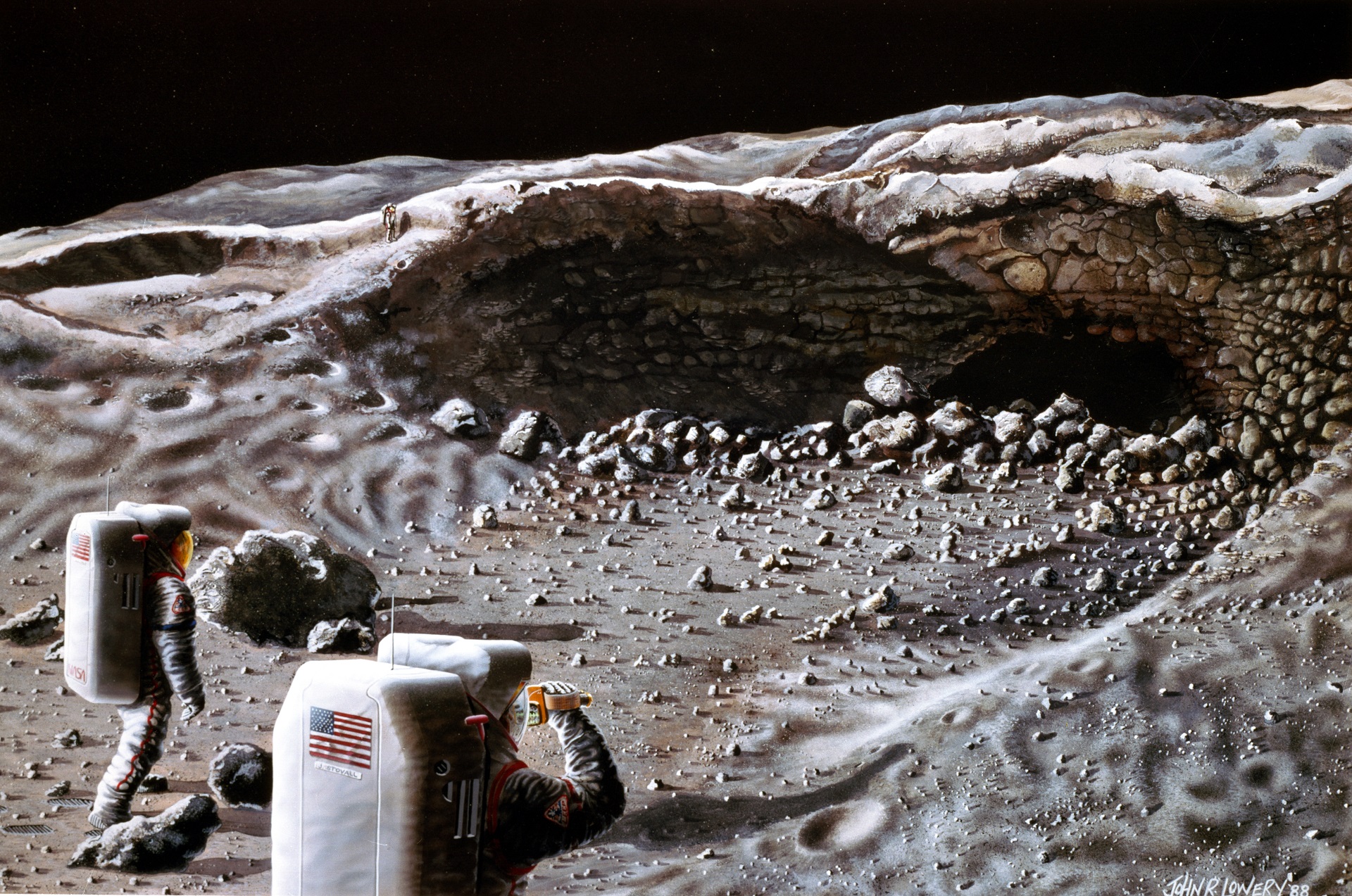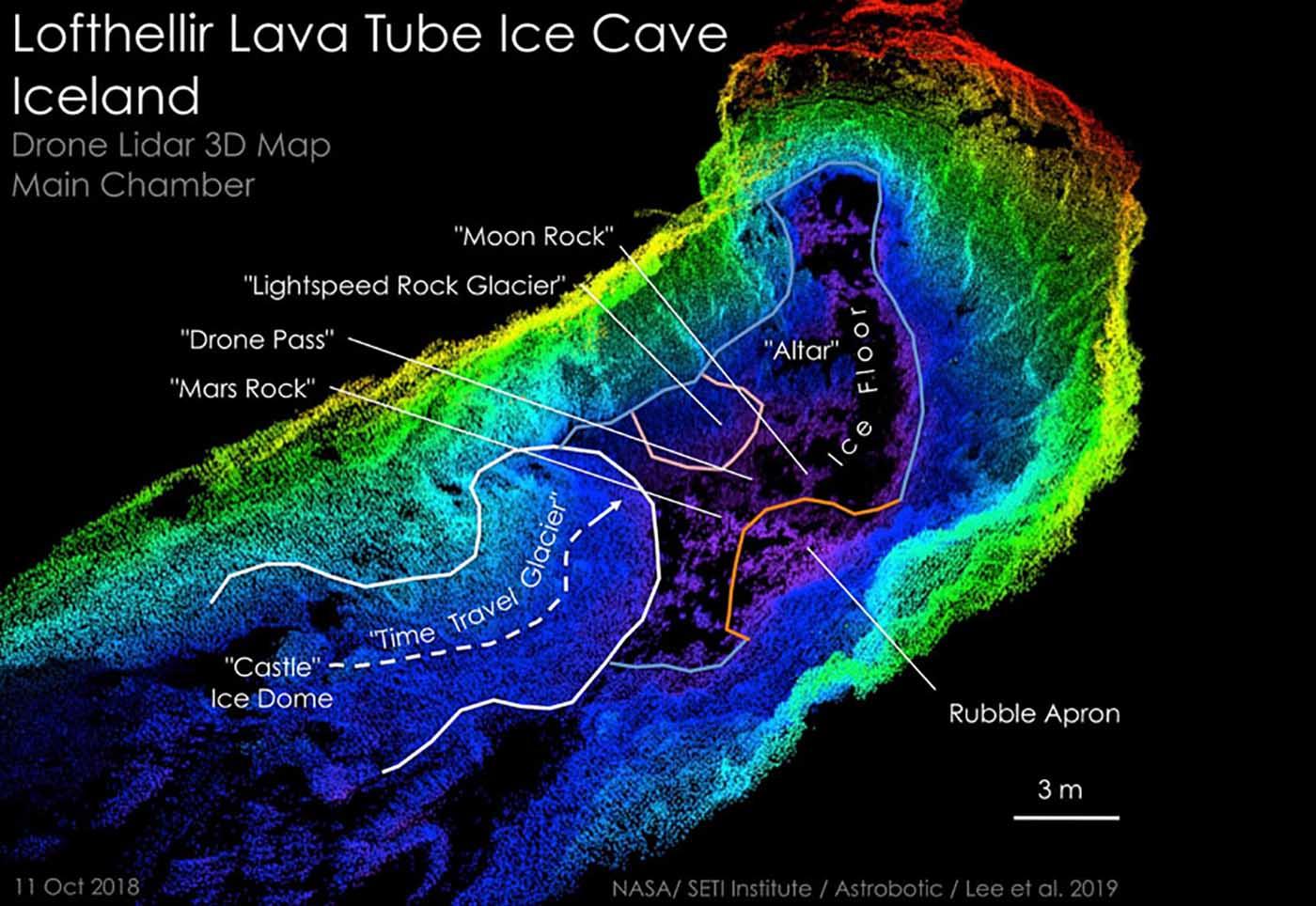Scientific Discoveries within Lunar Caves: Nasa Moon Caves

NASA’s exploration of lunar caves has yielded a wealth of scientific discoveries, significantly advancing our understanding of the Moon’s history and potential for future human habitation.
Lunar caves are unique environments that have been shielded from the harsh radiation and extreme temperatures of the lunar surface. This has allowed for the preservation of pristine materials and geological features that provide valuable insights into the Moon’s formation and evolution.
Geological Discoveries
Exploration of lunar caves has revealed a complex geological history. Caves have been found to contain a variety of rock formations, including lava tubes, breccias, and regolith. These formations provide evidence of volcanic activity, meteorite impacts, and other geological processes that have shaped the Moon’s surface.
Mineralogical Discoveries
Caves have also yielded a variety of minerals, including silicates, oxides, and sulfides. These minerals provide insights into the Moon’s chemical composition and the processes that have occurred within its interior. Some of these minerals, such as water ice, are essential for future human exploration and habitation.
Biological Discoveries
While no definitive evidence of life has been found in lunar caves, the discovery of organic molecules and other biosignatures suggests the potential for past or present life. These discoveries raise intriguing questions about the possibility of life beyond Earth and the potential for lunar caves to support future biological research.
Potential for Human Habitation, Nasa moon caves
Lunar caves offer a promising environment for future human habitation. They provide protection from radiation, extreme temperatures, and micrometeorites. Additionally, caves could be used to store resources, such as water and oxygen, and provide a stable environment for human exploration and research.
The scientific discoveries made within lunar caves have significantly advanced our understanding of the Moon’s history and potential for future human habitation. These discoveries will continue to guide future exploration and research efforts, paving the way for a new era of lunar exploration and discovery.
Technological Advancements for Cave Exploration
Nasa moon caves – NASA has invested significant resources in developing cutting-edge technologies to overcome the unique challenges of exploring lunar caves. These advancements have revolutionized our ability to navigate, map, and analyze the complex and fragile environments within these subterranean structures.
One of the most significant breakthroughs is the development of autonomous rovers specifically designed for cave exploration. These rovers are equipped with advanced sensors, cameras, and navigation systems that allow them to navigate the narrow and winding passages of lunar caves with precision and efficiency. They can also collect data and images of the cave walls, providing valuable information about the geological and mineralogical composition of the environment.
3D Mapping and Visualization
Another important technological advancement is the development of 3D mapping and visualization techniques. These techniques use data collected by rovers and other sensors to create detailed 3D models of lunar caves. These models allow scientists to visualize the cave structures, identify potential hazards, and plan exploration missions with greater accuracy and safety.
Design Considerations for Human Habitation in Caves

Lunar caves present intriguing possibilities for establishing sustainable human habitats on the Moon. Their natural protection from radiation, micrometeoroid bombardment, and extreme temperature fluctuations offers advantages over surface-based habitats. However, designing these habitats requires careful consideration of unique challenges and opportunities.
Key Design Considerations
Establishing a sustainable human habitat within lunar caves necessitates meticulous planning and design considerations. The following factors play a crucial role:
- Structural Stability: Caves must be assessed for structural integrity to ensure they can withstand seismic activity, cave-ins, and other potential hazards.
- Environmental Control: Caves require systems to regulate temperature, humidity, and air quality to create a habitable environment for humans.
- Radiation Shielding: Caves provide natural radiation shielding, but additional measures may be necessary to protect astronauts from prolonged exposure.
- Resource Utilization: Caves may offer access to resources such as water ice or minerals, which could be vital for sustaining human life.
- Access and Mobility: Designing efficient access points and transportation systems within the cave is crucial for human movement and exploration.
Advantages and Disadvantages of Lunar Caves as Living Spaces
While lunar caves offer several advantages as potential living spaces, they also pose certain challenges:
Advantages
- Protection from Radiation: Caves provide inherent protection from harmful radiation, reducing the need for extensive shielding.
- Stable Temperature: Caves maintain relatively stable temperatures, mitigating the need for complex thermal regulation systems.
- Access to Resources: Some caves may contain valuable resources such as water ice or minerals, providing sustenance for human habitation.
Disadvantages
- Limited Space: Caves can be confined, restricting the amount of living and working space available.
- Structural Integrity: Caves may require reinforcement or stabilization to ensure structural integrity and prevent collapse.
- Access and Mobility: Navigating within caves can be challenging, requiring specialized equipment and training.
The allure of NASA’s moon caves has captivated imaginations for decades, promising hidden wonders beneath the lunar surface. Yet, as the political landscape shifts , the pursuit of these celestial caverns may be influenced by changing priorities. Nonetheless, the exploration of moon caves remains an endeavor fraught with both scientific promise and the potential to rewrite our understanding of our place in the cosmos.
NASA’s recent discovery of moon caves has sparked renewed interest in lunar exploration. These caves could potentially provide shelter and resources for future missions, and could also shed light on the history of the moon. One of the most intriguing aspects of the moon caves is their potential for harboring life.
While the moon is generally considered to be a lifeless body, the caves could provide a unique environment that could support microbial life. The discovery of life on the moon would be a major scientific breakthrough, and could have implications for our understanding of the origins of life on Earth.
Glenn Youngkin, the Republican candidate for governor of Virginia , has expressed his support for continued exploration of the moon. Youngkin believes that the moon could be a valuable source of resources for the United States, and that further exploration could lead to the development of new technologies.
The discovery of moon caves is a major step forward in our understanding of the moon, and could have implications for future space exploration and our understanding of the origins of life.